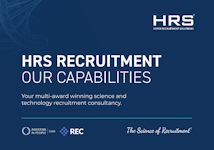What Are The Classes of Medical Device?
Under EU law, medical devices are categorised within 4 classes. They are classified according to the risks they potentially pose to patients, alongside the level of regulation involved in their manufacturing, marketing and usage.
- Medical Device Class I
- Medical Device Class IIa
- Medical Device Class IIb
- Medical Device Class III
The easiest way to remember the different medical device classes is by knowing that Class I devices are the low-risk products, whereas the Class III devices pose the highest safety risk to patients.
How Do You Regulate Medical Devices?
In the UK, The Medicines and Healthcare products Regulatory Agency (MHRA) is responsible for regulating the UK medical devices market.
Regulation is necessary for medical devices, as it ensures that available products are safe and of high-quality for public usage.
Medical Device Classes Explained: Class I
Class I medical devices are low-risk devices that are subject to little regulation - this is due to the fact that they pose minor safety risks to the user and patient. Because of this, they are generally the easiest devices to introduce to the UK medical market.
These devices have minimal contact with patients and a low impact on their overall health. They do not come into contact with any internal organs, the central nervous system, or the cardiovascular system.
Examples of Class I medical devices are as follows:
- Stethoscopes
- Bandages
- Bedpans
- Tongue depressors
- Latex gloves
- Surgical masks
- Dental syringes
You will have probably come across Class I medical devices on a routine doctor's trip, without even noticing!
Medical Device Classes Explained: Class IIa
Class IIa medical devices pose a higher risk than Class I medical devices as they're more likely to come into sustained contact with a patient. This class involved products and devices that may come into closer contact with the patient's internal organs.
Examples of Class IIa medical devices include:
- Suture needles
- Short-term corrective contact lenses
- Standard hearing aids
- TENS (transcuctaneous electrical nerve stimulation) devices
It's best to think of Class IIa medical devices as those used when Class I devices wouldn't be sufficient or effective. It's also important to note that Class IIa medical devices are subject to Special Controls - these regulations could include special labelling, patient registries and performance standards.
To note the difference between Class IIa devices and Class IIb devices: Class IIa devices are low to medium risk, whereas Class IIb devices have medium to high risks to the user or patient.
Medical Device Classes Explained: Class IIb
Class IIb devices refer to the most surgically invasive or active devices that are either partially or completely implanted into the body for 30 days or longer.
Class IIb devices can include:
- Ventilators
- Intensive care monitoring equipment
- Apnoea monitors
- Surgical lasers
- Diagnostic X-ray sources
These devices will also undergo a device-type examination by an authoritative and Notified Body.
Medical Device Classes Explained: Class III
These are the devices that sustain or support life, and are generally used when there is a dangerous illness or injury. These products are high-risk devices that require pre-market approval - this is the scientific and regulatory review to evaluate the safety and effectiveness of the device.
Examples of a Class III medical device could include:
- Breast implants
- Pacemakers
- Defibrillators
- Balloon catheters
- Cochlear implants
- Implanted prosthetics
- Contraceptive IUDs
To get a Class III medical device approved, it would need a full quality assurance system audit, alongside an examination of the device's design and manufacturing by a European Notified Body.
